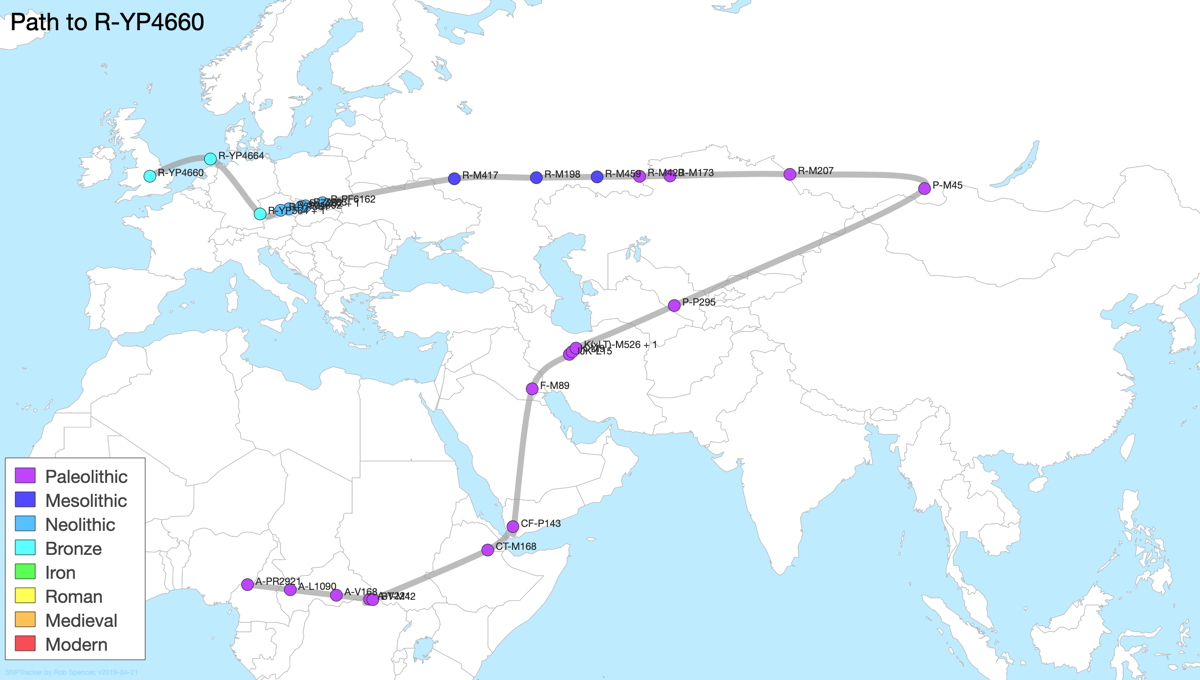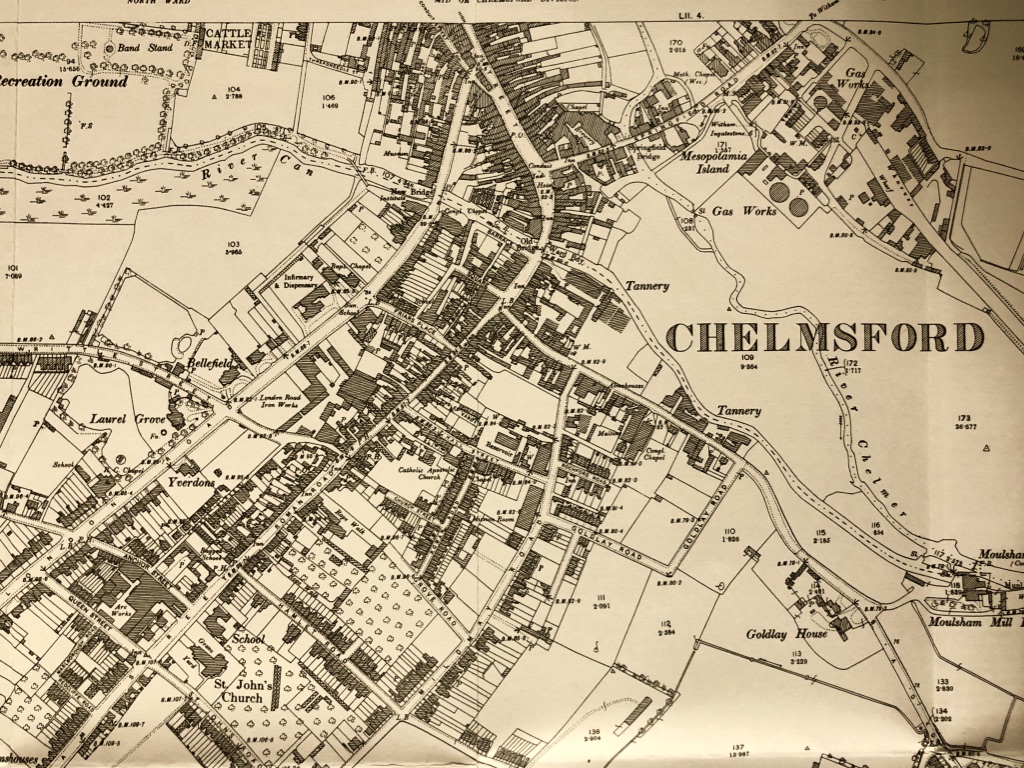
SNP Tracker and Maps #6
As I discussed in #4 the Y-DNA test allows for a long history of the male line to be traced as it has a number of traceable elements compared to mtDNA (female line). Now websites have been developed that show that track across time and migration much more visually.
One such site is http://scaledinnovation.com/gg/snpTracker.html shown above, another is https://phylogeographer.com/mygrations/?hg=R1a&clade=YP4660
These site are using databases of ancient DNA from archaeological digs and current public data from people like myself who have tested for genealogical purposes.
So my male line which eventually became my particular branch of Sayers, came out of Africa, across the Middle East and on in to Asia (Serbia) in Palaeolithic times. Note over that very long period the haplogroup changes from A thru to P, before mutating into group R (my group) and at the end of the Palaeolithic period "they" were heading West towards what is now Europe.
Their migrations seems to have slow down, a change in climatic conditions perhaps?
Continuing through the Mesolithic (Middle Stone Age) the mutation to the Y-DNA continued and the travel still headed generally Westward.
By the time the period ended the haplogroup had diversified on the Steppes and my ancestry seems to have been R-M417.
Eventually my current terminal terminal SNP ( A terminal SNP is the defining SNPof the latest subclade known by current research.)
YP4660 arrived in the UK around the time of the Bronze Age, so my male line seem to have been around the UK for quite a while.
All of this data and tracking is constantly changing and being amended by new data.
This data under discussion is all before Surnames came into force, so as I said all very interesting, but little help to Family Tree research.
One such site is http://scaledinnovation.com/gg/snpTracker.html shown above, another is https://phylogeographer.com/mygrations/?hg=R1a&clade=YP4660
These site are using databases of ancient DNA from archaeological digs and current public data from people like myself who have tested for genealogical purposes.
So my male line which eventually became my particular branch of Sayers, came out of Africa, across the Middle East and on in to Asia (Serbia) in Palaeolithic times. Note over that very long period the haplogroup changes from A thru to P, before mutating into group R (my group) and at the end of the Palaeolithic period "they" were heading West towards what is now Europe.
Their migrations seems to have slow down, a change in climatic conditions perhaps?
Continuing through the Mesolithic (Middle Stone Age) the mutation to the Y-DNA continued and the travel still headed generally Westward.
By the time the period ended the haplogroup had diversified on the Steppes and my ancestry seems to have been R-M417.
Eventually my current terminal terminal SNP ( A terminal SNP is the defining SNPof the latest subclade known by current research.)
YP4660 arrived in the UK around the time of the Bronze Age, so my male line seem to have been around the UK for quite a while.
All of this data and tracking is constantly changing and being amended by new data.
This data under discussion is all before Surnames came into force, so as I said all very interesting, but little help to Family Tree research.
